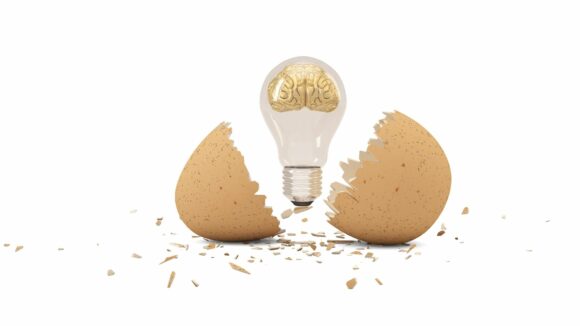
What are cryptocurrencies? How do they work, and what should you know about them before purchasing them? Hello and welcome to today’s post in which I will be taking you through a couple of interesting concepts about cryptos that you need to know about as a beginner. If this sounds interesting to you then stick to the very end so you can pick up the nuggets that will increase your knowledge about this industry.
P.S.
See our top-5 recommended cryptocurrency IRA service providers
The simple definition of cryptocurrencies
Cryptocurrency refers to decentralized digital money is based on a technology known as blockchain technology. You may have heard about the two most popular cryptocurrencies (Bitcoin and Ethereum), but you will be shocked to know that there are currently more than 5,000 cryptocurrencies.
How do cryptocurrencies work?
A cryptocurrency is, just like the paper money we know about, a medium of exchange, with the main differences being that it has the following characteristics:
- Digital
- Encrypted
- Decentralized
We have, for a long time, been using currencies such as the Dollar, Euro, Yen, Yuan, etc., which have a central authority that is charged with managing and maintaining them, such as central banks. Instead of having the central authority to manage and maintain them, crypto transaction verification tasks are broadly distributed amongst other crypto users.
Today, you can use cryptocurrencies to purchase goods and services, or you can invest in them, just like people invest in assets such as paper assets (stocks, bonds, funds, etc. ) and precious metals. The thing about cryptocurrencies, however, is that they can be very volatile, hence are risky to invest in. Those considering investing in them must be ready to stomach the short-term volatilities ( which can be quite bad at times), as they hope for the value of the cryptos to grow over the long-term horizon. Alternatively, they can learn how to trade the cryptos ( day-trading), and take advantage of the significant price swings to earn an income.
The first known cryptocurrency, Bitcoin, was created by Satoshi Nakamoto. The world is yet to figure out who Satoshi really is, and why he or she has decided to keep their identity a secret. It is known that Satoshi described Bitcoin as “an electronic payment system based on cryptographic proof instead of trust.” Cryptographic proof comes from the recording of cryptocurrency transactions on a blockchain.
What is blockchain?
A blockchain is best described as an open, distributed ledger on which transactions are recorded in code. We can think of it as a checkbook that is distributed across many computers all over the world. All transactions are recorded in “blocks”, that are then linked to a “chain” of other transactions.
You can also think of the blockchain as a book in which you record all your transactions daily. Each page on the book is likened to a block, and the whole book, which is a group of all the pages, is viewed as a blockchain.
With blockchain technology, any person who uses cryptos for any type of transaction has a copy of their book, and this means that there exists a unified transaction record. The blockchain software usually logs new transactions as they happen, and every cryptocurrency owner’s copy of the blockchain is updated simultaneously so that all the records are identical, and by extension, accurate.
To ensure that fraud does not occur on any blockchain, all transactions are verified using two main techniques, which are:
- Proof of work
- Proof of stake
What is proof of work?
Proof of work points to a method of verifying transactions on a blockchain, in which algorithms create mathematical problems that all the computers on the blockchain race to solve.
Every computer that participates in the solving of the problem is called a “miner”. The miner is tasked with solving mathematical puzzles that help with the verification of a group of transactions, known as a block, before adding them to the publicly accessible blockchain ledger. The first computer to solve the puzzle is usually rewarded with cryptocurrency tokens for their efforts.
The attempt to solve the computer puzzles consumes a lot of electricity and computer power. Most of the people who take to the “mining” of cryptocurrencies, may as such, never break even, if all the costs associated with purchasing the powerful computers and paying the power bills are put into perspective.
What is proof of stake?
To minimize the power consumption needed to verify cryptocurrency transactions, some types of cryptocurrencies use a method known as proof of stake. With this method, the number of transactions that every miner is allowed to verify is dependent on the amount of cryptocurrencies that they are in a position to “stake”.
Staking refers to the temporarily locking of cryptocurrencies in a communal safe in a bid to get a chance to participate in the cryptocurrency transaction verification process. As you can see, this is more like bank collateral. Every person who stakes their cryptocurrencies is eligible to take part in the crypto transaction verification process, though the odds one will be chosen to take part in the process increase based on the amount of cryptos they stake.
Proof of stake eliminates the need for the energy-intensive puzzle-solving process, hence is preferred to proof of work. Relying on the proof of stake method allows for the faster verification of the transactions.
If a stake owner gets the chance or is chosen to validate a certain group of transactions, they are usually rewarded with cryptocurrency (the aggregation of transaction fees from blocks of transactions). To minimize the likelihood of the occurrence of fraud, if one is chosen and they end up verifying invalid transactions, then they surrender part of the cryptocurrency that they staked.
There is a lot more than you can learn about what investing in cryptocurrencies is like (even as a conservative investor) by laying your hands on cryptocurrency investment kits offered by companies that provide Cryptocurrency IRA investment kits. Check out our review of the top-recommended crypto IRA service providers below:

Also read: 16 Cryptos to have in your IRA
OR
Top-5 Recommended Gold and Silver IRA Solutions
That will be all for today’s post in which we have looked at what cryptocurrencies are. I believe that you now have a brief idea about how cryptocurrency technology works. If you have more questions about today’s topic, drop them in the comments section, and I will get back to you ASAP.
I wish you well,
Eric, Investor and Team Member at Gold Retired!



Leave a Reply